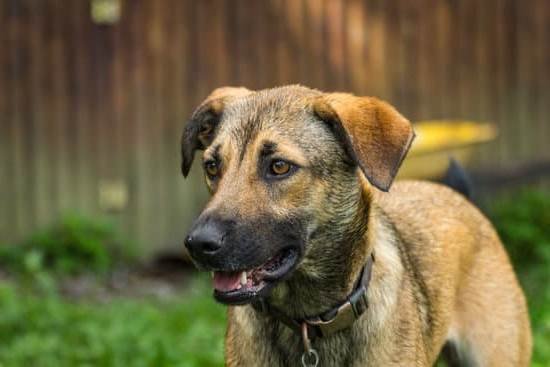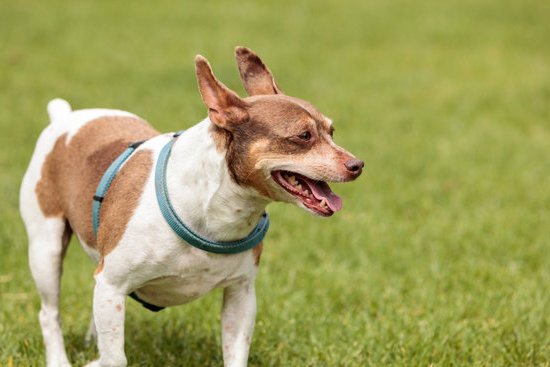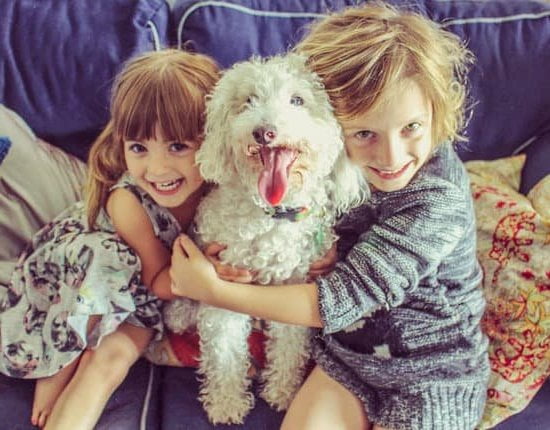Training your dog outside is a crucial aspect of their overall well-being and obedience. Not only does outdoor training provide an opportunity for your furry friend to get some fresh air and exercise, but it also allows them to learn and practice important commands in real-life scenarios. Whether you have a new puppy or an older dog who needs some extra guidance, training outside can be highly beneficial for both of you.
Outdoor training provides a more challenging environment compared to indoor training. Your dog will encounter various distractions, such as other animals, people, and noises, which will help them develop better focus and responsiveness to your commands. Additionally, being exposed to different scents and sounds outdoors stimulates their senses, ultimately enhancing their learning experience.
Moreover, training your dog outside ensures that they are comfortable obeying commands in any setting. Dogs are naturally inclined to follow their instincts and explore their surroundings. Training them outdoors helps establish boundaries and teaches them to listen even when there are plenty of exciting distractions around. This will make outings easier and safer, allowing you to take your furry companion on adventures without worrying about misbehavior.
In the following sections, we will discuss various factors you should consider when choosing a location for outdoor training, as well as the essential tools needed for effective training. We’ll also provide guidance on establishing a routine that promotes consistency in your dog’s learning journey.
Furthermore, we’ll cover basic obedience exercises specifically tailored for outdoor training scenarios, address common challenges you may encounter during this process, suggest bonding activities that strengthen the bond between you and your pet while training outside, explore advanced techniques to take your dog’s skills to the next level, and offer troubleshooting tips for overcoming difficulties.
By investing time and effort into training your dog outside using the techniques outlined in this article, you can ensure not only their obedience but also their happiness and well-being as part of your loving family dynamic.
Choosing the right location for outdoor training
When it comes to training your dog outside, choosing the right location is crucial for their success and safety. Here are some factors to consider and tips for finding the ideal spot:
- Size and Accessibility: Look for a location that offers enough space for your dog to move around comfortably without any restrictions. It should also be easily accessible so you can transport your dog and training equipment without any hassle.
- Safety: Ensure that the chosen spot is safe for both you and your dog. Avoid busy roads or areas with heavy foot traffic that can pose a risk of accidents or distractions.
- Distractions: While outdoor training is designed to expose your dog to various distractions, it’s important to strike a balance. Choose a spot that has some level of distractions but not too overwhelming for your dog, especially when starting their training journey.
- Noise Level: Pay attention to the noise level at the location you choose. Excessive noise can make it difficult for your dog to concentrate and follow commands effectively. Opt for quieter spots or areas where you have more control over the noise level during training sessions.
- Environmental Conditions: Consider the weather conditions in your area when selecting an outdoor training spot. Extreme heat, cold, rain, or wind can impact the effectiveness of the training session and even put your dog’s health at risk.
Tips for finding the ideal spot:
- Scout nearby parks or open spaces that allow dogs on leashes.
- Seek recommendations from other pet owners or local trainers who may know suitable locations in your area.
- Experiment with different spots until you find one that works best for you and your dog’s specific needs.
Remember, consistency is key when it comes to training. Stick to one location once you find an ideal spot so both you and your dog can become familiar with it, helping them focus on learning new commands without unnecessary distractions.
Essential outdoor training tools and equipment
When it comes to training your dog outside, having the right tools and equipment can make a huge difference in the success of your training sessions. Here are some essential items that you’ll need to effectively train your dog outside:
- A sturdy leash and collar: A strong leash and well-fitted collar are essential for keeping your dog under control during outdoor training. Look for a leash that is comfortable to hold and has a length appropriate for the specific training exercises you’ll be doing.
- Treats and rewards: Positive reinforcement is a key aspect of dog training, so be sure to have plenty of treats and rewards on hand. Choose small, easy-to-carry treats that your dog loves, as these will be an effective motivator during training sessions.
- Clicker: A clicker is a simple device that makes a clicking sound when pressed. It is used as a marker to signal to your dog that they have done something correctly and will be rewarded. Clickers are particularly useful for capturing precise behaviors and shaping them into desired commands.
- Toys: Having a few toys available during outdoor training can help keep your dog engaged and motivated. Interactive toys, such as treat-dispensing puzzles or balls, can be particularly helpful in focusing their attention on you during training exercises.
- Target stick or mat: Target sticks or mats can be used to teach your dog specific positions or behaviors by guiding them to touch or stand on the target with their paws or nose. This can be especially useful for advanced obedience training exercises.
By using these essential outdoor training tools and equipment, you’ll create an environment that sets both you and your dog up for success. Remember to choose items that are appropriate for your specific breed and size of dog, as well as tools that align with the type of training methods you’ll be using.
| Outdoor Training Tools | Description |
|---|---|
| Leash and collar | A sturdy leash and well-fitted collar are essential for keeping your dog under control during outdoor training. |
| Treats and rewards | Positive reinforcement is a key aspect of dog training, so be sure to have plenty of treats and rewards on hand. |
| Clicker | A clicker is a simple device that makes a clicking sound when pressed, used as a marker to signal correct behavior. |
| Toys | Having a few toys available during outdoor training can help keep your dog engaged and motivated. |
Establishing a routine
Establishing a routine is crucial for successful outdoor dog training. By creating a structured training schedule, you can ensure consistency in your training sessions and maximize the effectiveness of your efforts. Here are some tips on how to establish a routine for outdoor training:
- Set a regular schedule: Dogs thrive on routine, so it’s important to have consistent training sessions at the same time each day if possible. This will help your dog understand when it’s time to focus and learn.
- Keep sessions short and frequent: Dogs have shorter attention spans, so it’s better to have multiple short training sessions throughout the day rather than one long session. Aim for 5-10 minutes per session initially and gradually increase the duration as your dog progresses.
- Choose the right environment: Select a quiet location away from distractions where you can effectively communicate with your dog. Avoid high-traffic areas or places with excessive noise that may hinder your dog’s ability to focus.
- Use positive reinforcement: Incorporating rewards such as treats, praise, or playtime into your training sessions can motivate your dog and make learning more enjoyable. Make sure to reward desired behaviors promptly and consistently to reinforce good habits.
- Be patient and consistent: Training takes time and repetition, so be patient with your dog as they learn new commands and behaviors. Consistency is key, so ensure that everyone in the household follows the same training techniques and rules.
Creating a structured training schedule will not only enhance consistency but also help build trust between you and your dog during outdoor training sessions. By following these tips, you can establish an effective routine that promotes success in teaching your dog new skills in an outside environment.
| Tips for Establishing a Routine | Details |
|---|---|
| Set a regular schedule | Dog’s benefit from consistency; have training sessions at the same time each day. |
| Keep sessions short and frequent | Multiple short sessions are better than one long session; aim for 5-10 minutes initially. |
| Choose the right environment | Select a quiet location away from distractions and excessive noise. |
| Use positive reinforcement | Incorporate rewards like treats, praise, or playtime to motivate your dog. |
| Be patient and consistent | Training takes time and repetition; ensure everyone follows the same techniques and rules. |
Basic obedience training exercises for outdoor training
When it comes to training your dog outside, basic obedience training exercises are essential. Teaching your dog key commands such as sit, stay, and come in an outdoor environment can help improve their overall obedience and ensure their safety outdoors. Here are some tips for successfully training your dog with these basic commands outside.
Start with a familiar command and gradually transition to the outdoor environment
Begin by practicing the basic commands in a familiar and distraction-free indoor space. Make sure your dog has mastered the command before moving to an outdoor setting where there will be more distractions. Once your dog is reliable indoors, gradually introduce them to the outdoor environment.
Choose a quiet and secure area in your yard or a nearby park where you can train without too many distractions. Start by reinforcing the command in this new location while keeping sessions short and positive. Over time, increase the level of distraction by adding noises or other people and animals to help your dog become comfortable obeying commands outdoors.
Use positive reinforcement techniques
Positive reinforcement is crucial for effective training. Rewarding your dog with treats, praise, or play when they successfully respond to a command will motivate them to repeat the behavior. When training outside, it’s important to have high-value treats that will capture your dog’s attention amidst potential distractions.
Keep training sessions short and engaging so that your dog remains focused and interested. Use verbal cues along with visual signals like hand gestures or body language to reinforce the commands consistently. Be patient with your furry friend – learning in a new environment takes time, so celebrate their progress along the way.
Practice recall frequently
The recall command (often referred to as “come”) is one of the most critical commands for outdoor safety. Ensuring that your dog reliably comes when called can prevent accidents or dangerous situations. Practice recall frequently during outdoor training sessions using positive reinforcement techniques mentioned earlier.
Start by calling your dog’s name and then adding the command “come”. When they successfully reach you, reward them with praise or treats. Gradually increase the distance between you and your dog to make the training more challenging. Incorporate distractions into these sessions, such as having someone else hold your dog’s attention while you call them. Consistent practice will help reinforce this important command and keep your dog safe outside.
By following these tips and practicing outdoor training exercises for basic obedience commands, you can build a strong foundation for your dog’s overall obedience in an outdoor environment. Training your dog to respond reliably to commands like sit, stay, and come will not only enhance their well-being but also ensure their safety while enjoying outdoor adventures together.
Addressing distractions and challenges during outdoor training
When training your dog outside, it is inevitable that there will be numerous distractions. Other animals, people, and noises can easily divert your dog’s attention and make training more challenging. However, it is important to teach your dog to focus on you despite these distractions.
One effective way to address distractions during outdoor training is by gradually increasing the level of difficulty. Start with a quiet location that has minimal distractions, and gradually expose your dog to more stimulating environments as they become more proficient in their training. This gradual approach allows them to build up their focus and impulse control over time.
Additionally, using rewards and positive reinforcement can help redirect your dog’s attention back to you when they get distracted. Rewarding them for maintaining focus despite distractions reinforces the behavior you want to see from them. Keep small, high-value treats handy during training sessions so that you can quickly reward good behavior.
Another helpful technique is the use of “proofing.” This involves deliberately introducing controlled distractions into your training sessions so that your dog learns to maintain focus even in the face of distractions. For example, you can have a friend walk by or play sounds of other animals while practicing commands. Gradually increase the intensity of the distraction while continually reinforcing desired behaviors.
It is crucial to remember that patience and consistency are key when addressing challenges during outdoor training. Dogs do not generalize well initially, so be prepared for setbacks as they adjust to different environments and distractions. With consistent practice and positive reinforcement, your dog will learn to stay focused on you regardless of what may be happening around them.
Bonding activities for outdoor training
Play fetch
One of the classic bonding activities for outdoor training is playing fetch. This game not only helps to exercise your dog physically but also strengthens the bond between you and your furry friend. Start by throwing a toy or a ball for your dog to retrieve. Encourage them with praise and rewards when they successfully bring it back to you. Playing fetch also allows your dog to practice their recall skills, as they learn to return to you when called.
Tug-of-war
Tug-of-war is another fun game that can enhance the bond between you and your dog while training outdoors. Choose a sturdy rope or tug toy that is specifically designed for this activity. Hold one end of the toy firmly while inviting your dog to grab onto the other end.
Gently tug back and forth, allowing your dog to feel a sense of accomplishment when they are able to hold onto the toy. Remember to set boundaries and teach your dog cues such as “take it” and “drop it” to maintain control during play.
Hide-and-seek
Hide-and-seek is not only an enjoyable game for children, but dogs can also have a blast with this activity during outdoor training. Start by having someone hold onto your dog while you go hide behind an object or tree nearby. Once hidden, call out your dog’s name in an excited tone and encourage them to find you.
When they locate you, reward them with treats, praise, or playtime together. This game strengthens the bond between you by reinforcing trust and communication.
These bonding activities are not only enjoyable for both you and your dog; they also serve as excellent opportunities for positive reinforcement during outdoor training sessions. Remember that every interaction with your pet should be fun and rewarding, building a strong relationship based on love, trust, and respect.
Advanced outdoor training techniques
Once your dog has mastered the basic obedience commands and has become comfortable with outdoor training, you can start incorporating advanced commands and agility exercises into their training routine. These advanced techniques will challenge your dog both mentally and physically, further improving their obedience and overall fitness. Here are some advanced outdoor training techniques to take your dog’s training to the next level:
- Advanced Commands: Building upon the basic obedience commands, advanced commands require more precision and focus from your dog. These commands can include tasks such as heel off-leash, where your dog walks closely by your side without a leash, or “leave it,” where your dog learns to resist grabbing food or other tempting items on command.
- Agility Exercises: Agility exercises provide mental stimulation and physical exercise for your dog while enhancing their coordination skills. Set up an obstacle course in your outdoor training area using items like cones, ramps, tunnels, and jumps. Teach your dog to navigate through these obstacles using verbal cues and hand signals.
- Distance Training: Once your dog is proficient with basic commands at close range, you can start practicing them at longer distances. This technique requires clear communication between you and your dog through visual cues or whistle commands.
- Trick Training: Teaching fun tricks not only provides mental stimulation but also strengthens the bond between you and your furry friend. Impressive tricks like playing dead, rolling over, or giving a high-five can be taught outdoors too.
Remember to always use positive reinforcement techniques while teaching these advanced commands and exercises. Patience and consistency are essential during this phase of training. Celebrate each small accomplishment along the way and reward your pup with treats or praise for a job well done.
By incorporating these advanced outdoor training techniques into your routine, you will continue to challenge your dog’s abilities while strengthening the bond between you two even further. Stay dedicated to their education, keep sessions short but frequent, and watch as they blossom into a well-trained and confident dog.
Troubleshooting common difficulties
In conclusion, outdoor dog training can be a rewarding and beneficial experience for both you and your furry friend. By training your dog outside, you are not only promoting their overall well-being but also improving their obedience skills in a real-world setting. However, it is important to acknowledge that outdoor training may come with its own set of challenges and difficulties.
One common challenge that many dog owners face during outdoor training is distractions. It is natural for dogs to be curious and easily distracted by other animals, people, or noises in the environment.
To address this challenge, it is important to start with basic obedience training exercises in a quiet and controlled area before gradually increasing the level of distractions. Use positive reinforcement techniques to reward your dog’s focus and attention when they ignore distractions and stay focused on you.
Another difficulty that you may encounter during outdoor dog training is stubbornness or resistance from your dog. Some dogs may be more hesitant or unwilling to follow commands in an outside environment compared to indoors. This can be due to fear or anxiety related to new surroundings or distractions.
In such cases, it is important to remain patient and consistent with your training efforts. Break down the commands into smaller steps and provide plenty of positive reinforcement when your dog shows progress.
Finally, one common difficulty in outdoor training is managing leash pulling or lunging behavior. Dogs are naturally inclined to explore their surroundings and may pull on the leash or lunge towards interesting stimuli during walks or training sessions. To address this challenge, consider using a front-clip harness or a head halter that provides more control over your dog’s movements during walks. Additionally, incorporate loose leash walking exercises into your routine to teach them proper leash manners.
Overall, troubleshooting common difficulties during outdoor dog training requires patience, consistency, and adaptability from both you and your dog. With time and effort, you can overcome these challenges and establish a strong bond with your furry friend while enjoying the benefits of training them in an outdoor environment.
Frequently Asked Questions
How do I train my dog to like being outside?
Training a dog to enjoy being outside requires patience, positive reinforcement, and gradually exposing them to the outdoors. Start by creating a positive association with outdoor spaces through treats and praise. Begin by taking short walks in familiar areas and gradually increase the distance and duration of outdoor activities.
Allow your dog to explore and sniff around while keeping a close eye on them for safety. Make sure they have shade, water, and comfortable resting spots when outside. Engage in interactive play or training sessions outdoors so that your dog can associate outdoor time with fun and positive experiences.
How do I get my dog to pee when I go outside?
To encourage your dog to pee outside, establish a consistent routine and use positive reinforcement techniques. Take your dog out on a regular basis, especially after meals, naps, or waking up in the morning. Choose a specific spot in your yard or designated areas during walks for their bathroom needs.
Use verbal cues like “go potty” or any preferred command consistently while they are eliminating. When your dog successfully pees outside, reward them with verbal praise, treats, or gentle pats to reinforce this behavior positively. Be patient as it may take time for dogs to understand where they should relieve themselves.
How do I train my dog not to run away outside?
Training a dog not to run away outside involves teaching them recall commands, building trust, and using appropriate boundaries. Begin indoors by teaching basic obedience commands such as “come” or “stay.” Gradually transition this training to an enclosed outdoor space with minimal distractions.
Practice recall exercises regularly using high-value treats as rewards for coming back to you promptly when called. Always maintain a positive and encouraging tone while training to build trust between you and your dog.

Welcome to the blog! I am a professional dog trainer and have been working with dogs for many years. In this blog, I will be discussing various topics related to dog training, including tips, tricks, and advice. I hope you find this information helpful and informative. Thanks for reading!





